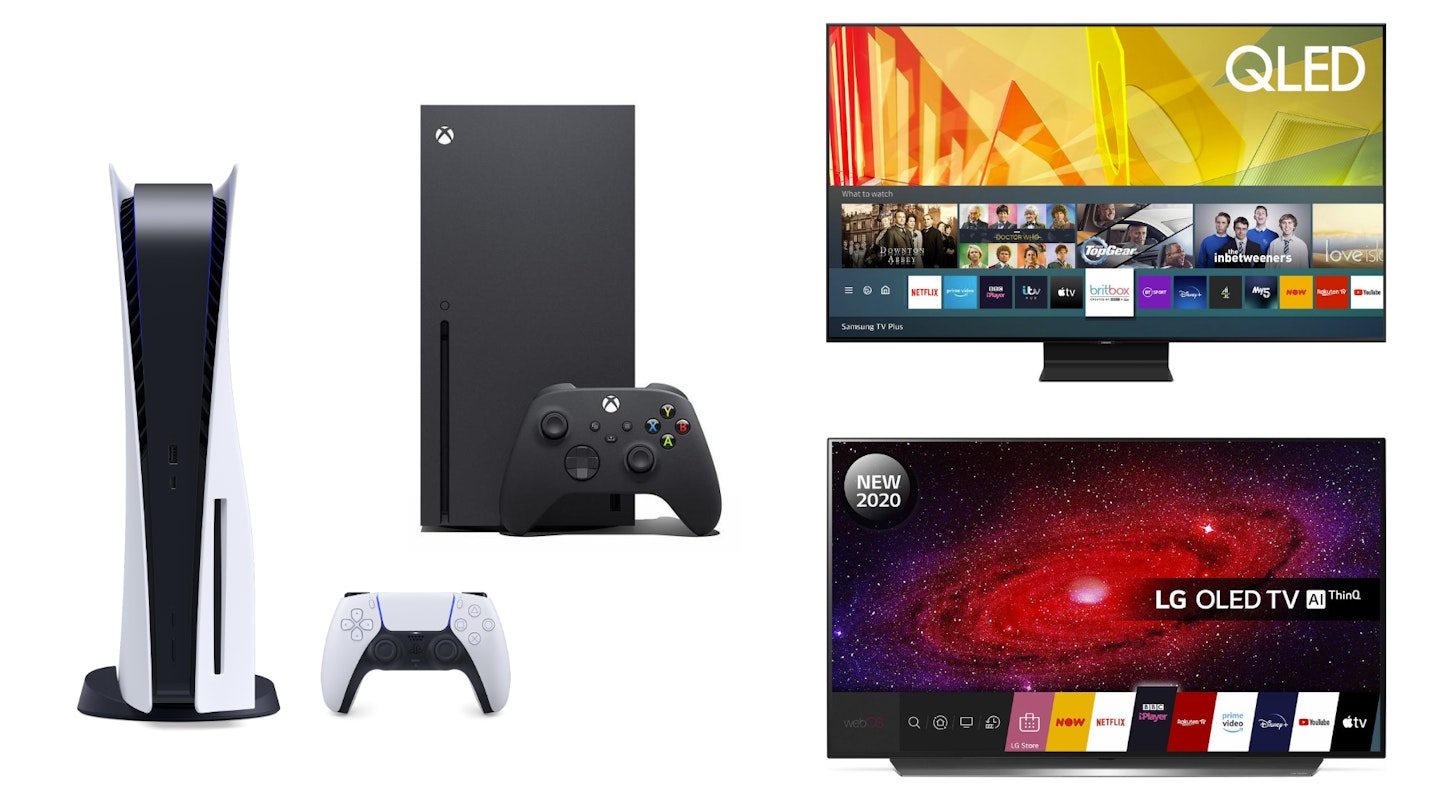There was once a time when you could plug your game console into the aerial plug of a portable CRT television, and you were good to go. Undoubtedly a happy time, but one that's consigned to the history books. Now, things are a little more complicated.
The PlayStation 5 and Xbox Series X are closer to gaming PCs in their specs and performance, with 120fps gameplay unfolding on a field of 4K resolution. While this high-performance is thrilling to behold, getting a television that can match the standard can be a tricky business.
To help you find the TV that will unlock the power of the latest console generation, we’ve rounded up the best TVs for gaming. There are affordable options for those on a budget that carries essential game-enhancing tech, through to high-end models for gamers with deep pockets. Here you’ll find TVs that boast incredible feature sets and systems that unlock both the visual and audio excellence that contemporary gaming can offer.
Much of the terminology feels closer to the lingo surrounding PC gaming monitors rather than the everyman approachability of smart TVs. While it can be a little daunting at first, it soon all falls into place. Below, we’ve put together a quick guide to the key features to look for when buying a gaming TV.
What we look for in the best TVs for gaming:
High Dynamic Range (HDR)
High Dynamic Range (HDR) is a must, as it improves the contrast, brightness and colour gamut displayed by a TV. It’s a technology that enhances the details in shadows and highlights, and when used well helps bring a lifelike pop and flair to images. There are several standards available, including HDR10, HDR10+. HLG and Dolby Vision.
The PlayStation 5 and Xbox Series X support HDR10, but Microsoft’s console also supports Dolby Vision on some streaming apps, with its support on games promised for later updates and releases.
HDR isn’t just for gaming. It’s something to take advantage of if you’re looking for a multifunctional TV that will deliver excellent visual experiences with streaming, Blu-ray and 4K UHD movies and TV shows, too.
Refresh Rate
The refresh rate of a TV refers to how many times the screen refreshes the image every second. Measured in Hertz (Hz), the higher the refresh rate, the smoother the image – low refresh rates can make fast-paced content appear blurry or torn.
Hz has a close relation to frames per second (fps). A 60Hz screen is going to be able to show you 60fps gameplay, while 120Hz will bring 120fps.
The PS5 and Xbox Series X can push out 4K resolution at 120fps, so anyone looking to get the most out of the latest generation will want to pick up a 120Hz TV - though this does push up the price considerably.
If you can’t stretch to a 120Hz TV, that’s fine. 60Hz is still going to look grand, and there are still plenty of games releasing at 30fps. Of course, Nintendo Switch is also home to some incredible games that top out at 60fps, too.
Variable Refresh Rate (VRR)
Screen tears and visual glitches are something that PC monitors have been battling for years. It’s a distracting and ugly occurrence that happens when the refresh rates of a screen and its connected device, in this case, a game console, are out of sync. This is most noticeable when playing fast-paced content, like racers or first-person shooters.
If a TV has a variable refresh rate (VRR), a VRR-carrying console can dictate to the screen the refresh rate. This synchronisation stops the screen tearing and results in better time for all. Consoles with VRR are the PlayStation 5 and the Xbox Series X, Series S, One X and One.
The TL;DR version for PC gamers is that VRR is to TVs what NVIDIA G-Sync and AMD FreeSync are to gaming monitors.
Interfaces
For gaming at 4K/60Hz on the latest generation of consoles, a TV needs to have HDMI 2.0, but ideally HDMI 2.0a, as these connections support HDR. Thankfully, if a TV is advertised as being 4K with HDR, then the HDMI connections carried will be at least HDMI 2.0a.
After this, it comes down to how many HDMI interfaces a TV carries. Two or three ports will be fine for anyone with a smaller entertainment setup, while those with several consoles, Blu-ray player, media streamer and soundbar will want to look for more.
It’s also worth noting how many HDMI ports of each iteration a TV carries. It’s not unusual for a TV to carry one HDMI 2.1 port, which allows for 4K/120Hz gaming, and a couple of HDMI 2.0a/b ports.
Audio
Without good audio, you’re not going to have a good time gaming. You’ll lose the feedback cues in tactical gameplay, horror games will be void of atmosphere and 3D-platformers will feel empty without their catchy soundtracks.
A TV with a good set of internal speakers is the minimum requirement here. However, a soundbar, surround sound or gaming headset will give the edge. While all of these devices can be connected to a TV via wireless or 3.5mm jacks, the ideal solution is ARC or eARC, which allows you greater control over the audio levels and unlocks cutting-edge sound systems, like Dolby Atmos or DTS Virtual
The Xbox Series X|S supports Dolby Atmos, so compatibility with the sound system is something to look for with a TV and accompanying speaker devices.
The PlayStation 5 uses 3D-sound, something of Sony’s creation. While this isn't a universal standard, it's a powerful feature with plenty of potential in future titles. A high-quality audio device will be essential to unlock its immersive qualities.
Just so you know, whilst we may receive a commission or other compensation from the links on this page, we never allow this to influence product selections.
The best TVs for gaming:
Samsung TU8000
Sony BRAVIA KD XH95
LG BX Series OLED
LG CX Series OLED
Samsung Q90T QLED
Samsung TU8000

The Samsung TU8000 series is a great choice for gamers, balancing performance and cost well. The 60Hz refresh rate couples up with Samsung’s Motion Rate and Game Enhancement tech to deliver an incredibly smooth 4K/60fps image. The input lag is low, and the colour representation and HDR are very accomplished.
There are three HDMI ports, which is enough space for a couple of consoles and a media streamer, but users with several devices will want to pick up an external HDMI switch. There’s even a composite cable input - good news for anyone who still likes to jump onto PS2 or GameCube from time-to-time.
Though there’s not much in the way of specialist audio tech, eARC support will allow a soundbar to link in and provide a little extra kick.
Available in: 43-inch, 50-inch, 55-inch, 65-inch, 75-inch, 82-inch
Pros
- Affordable
- Good performance on 4K/60fps gameplay
Cons
- Average audio performance
- No VRR
| Image Tech: | Crystal Processor 4K, Dual LED, Crystal Display, Motion Rate, HDR10+, HLG |
| Audio Tech: | Dolby Digital Plus |
| Native Refresh Rate: | 60Hz |
| VRR: | No |
| Connections: | HDMI 2.1 x3 (eARC support), USB x2, Bluetooth, WiFi, ethernet |
Sony BRAVIA KD XH95

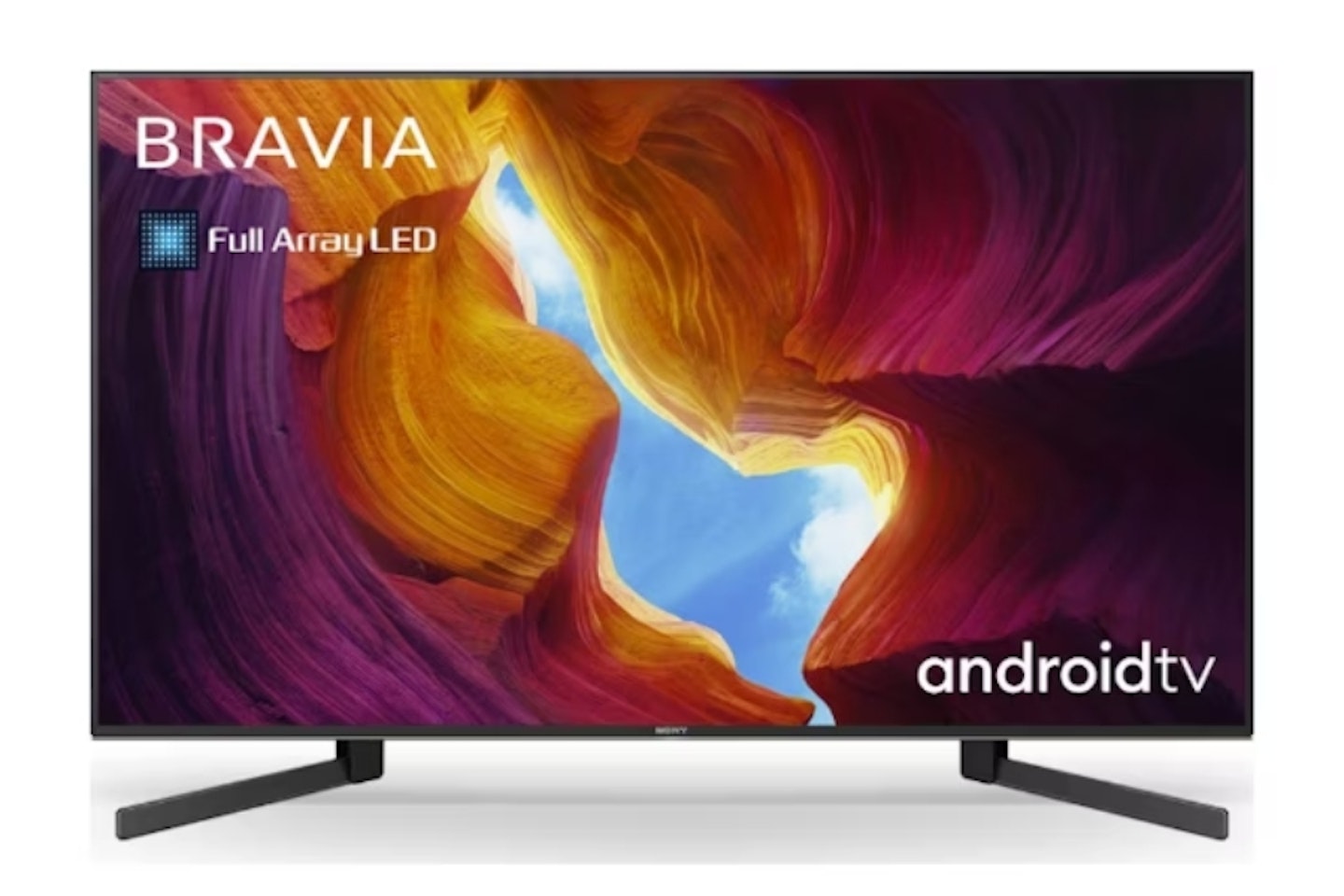
www.currys.co.uk
Sony has designed this TV, or at least a certain amount of its features, to showcase what the PS5 can do. It’s capable of pushing out 4K/120fps with X-Motion Clarity doing magical things to ensure that there’s no blur on even the most visually intense scenes.
For video games, TVs and movies, the IMAX Enhanced full-array LED backlighting has the image looking accurate, bright and balanced, while the TRILUMINOS provides a vibrant and lifelike color. HDR support is comprehensive and includes Dolby Vision, which, funnily enough, makes this Sony TV an ideal partner for the Xbox Series X.
There are four HDMI 2.0b connections, so there’s room for more devices besides your game consoles. Dolby Atmos is also supported.
Available in: 49-inch, 55-inch, 65-inch, 75-inch, 85-inch
Pros
- Excellent image quality
- supports 4K/120fps and Dolby Atmos
Cons
- No VRR
| Image Tech: | Sony X1 Ultimate Processor, TRILUMINOS display, X-Motion Clarity, X-Motion Dynamic Range PRO, Dolby Vision, HDR10, HLG |
| Audio Tech: | Dolby Atmos, DTS, S-Force Front Surround |
| Native Refresh Rate: | X-Motion Clarity |
| VRR: | No |
| Connections: | HDMI 2.1 x1, HDMI 2.0b x3, USB 2.0 x1, Composite x1 |
LG BX Series OLED
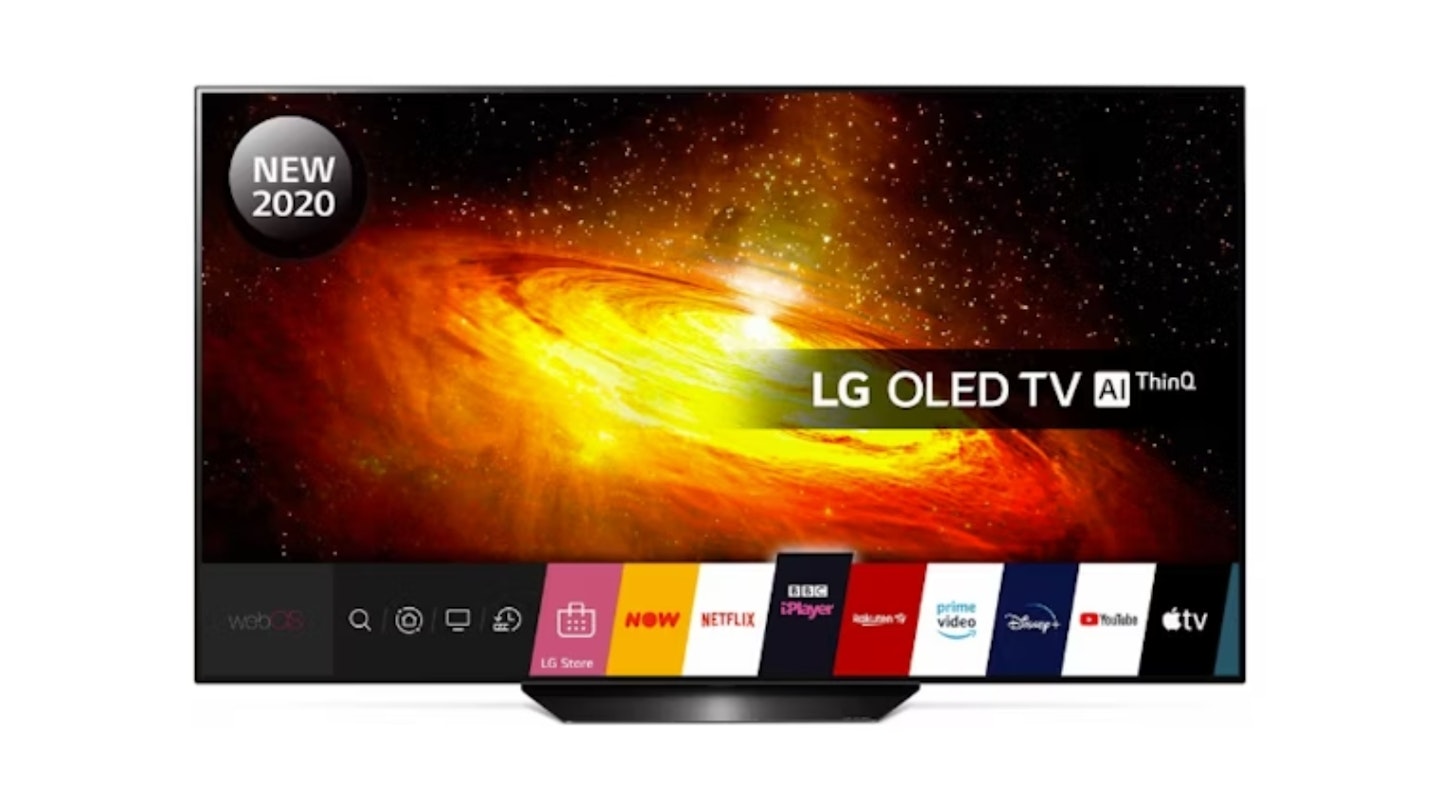
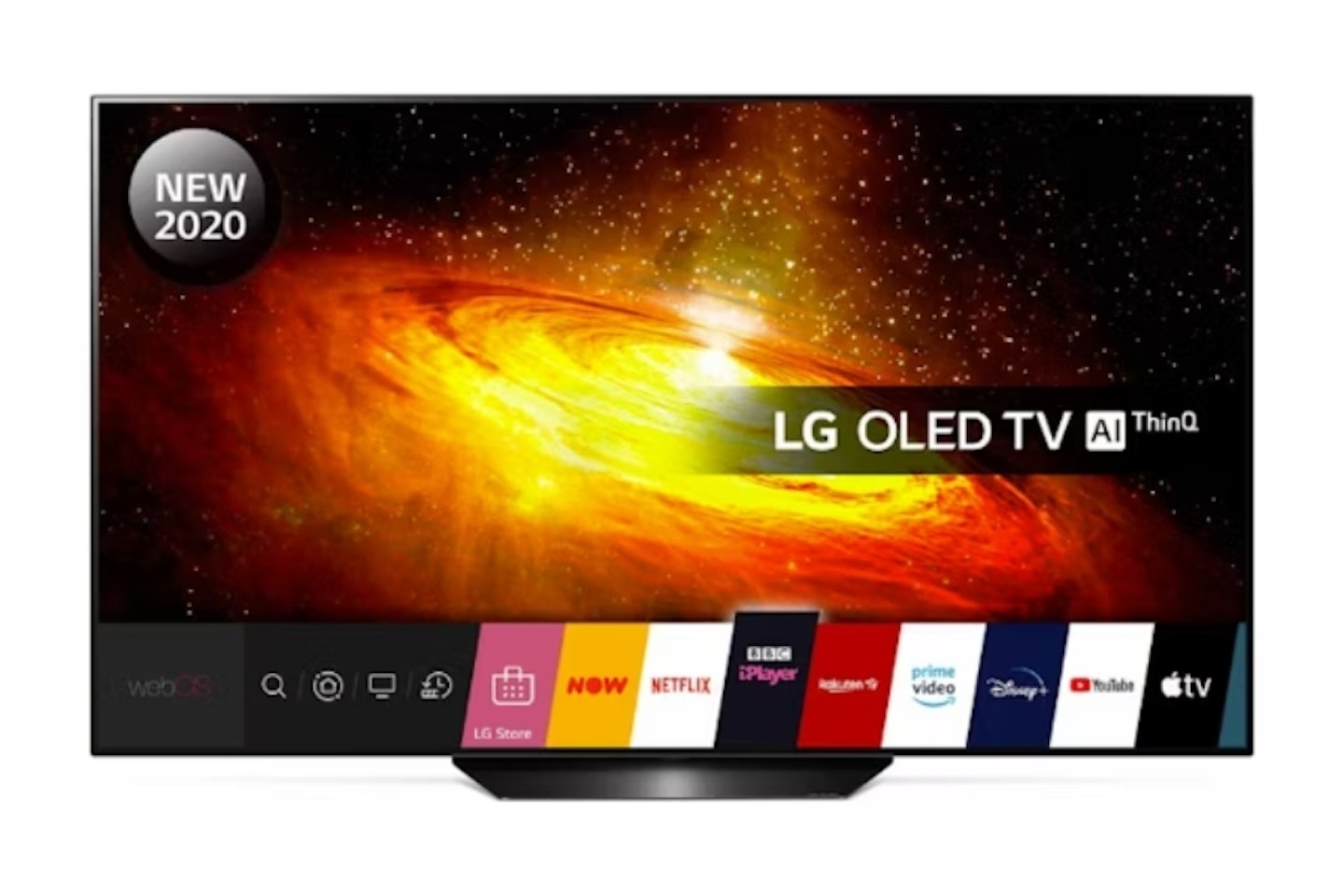
www.argos.co.uk
The LG BX Series OLED carries a 120Hz native refresh rate with a 1ms input lag, hitting 4K/120fps without fault, and a Game Mode that provides a remarkable smoothness to fast-paced and complex gaming moments. It’s also one of the first TVs to carry NVIDIA G-SYNC and FreeSync compatibility, which is good news for anyone with a meaty GPU in their gaming PC.
The self-lighting OLED tech carries across a staggering sense of realism, with images appearing detailed, deep and vibrant. The powerful HDR furthers this cause, with the perfect black being attainable, giving great weight and atmosphere to gaming content. Dolby Vision IQ adds to the already impressive, punchy colour representation by intelligently adjusting contrast and brightness.
The AI inside the a7 Gen3 Intelligent Processor does a lot of heavy lifting here too. As well as optimising content and upscaling visual content, the processor optimises and upscales audio by up-mixing two-channel audio to 4.0.
Available in: 55-inch, 65-inch
Pros
- Supreme quality image and colour representation
- Industry-leading game support
Cons
- Expensive
- Low brightness
| Image Tech: | a7 Gen3 Intelligent Processor, OLED, Perfect Colour, Dolby Vision IQ, HDR10, HDR10+, HLG, NVIDIA G-SYNC & FreeSync compatible |
| Audio Tech: | AI upscaling, Dolby Atmos, 2.2ch |
| Native Refresh Rate: | 120Hz |
| VRR: | Yes |
| Connections: | HDMI 2.0 x2, HDMI 2.1 x2 (eARC supported), USB x3, Bluetooth, WiFi, ethernet |
LG CX Series OLED
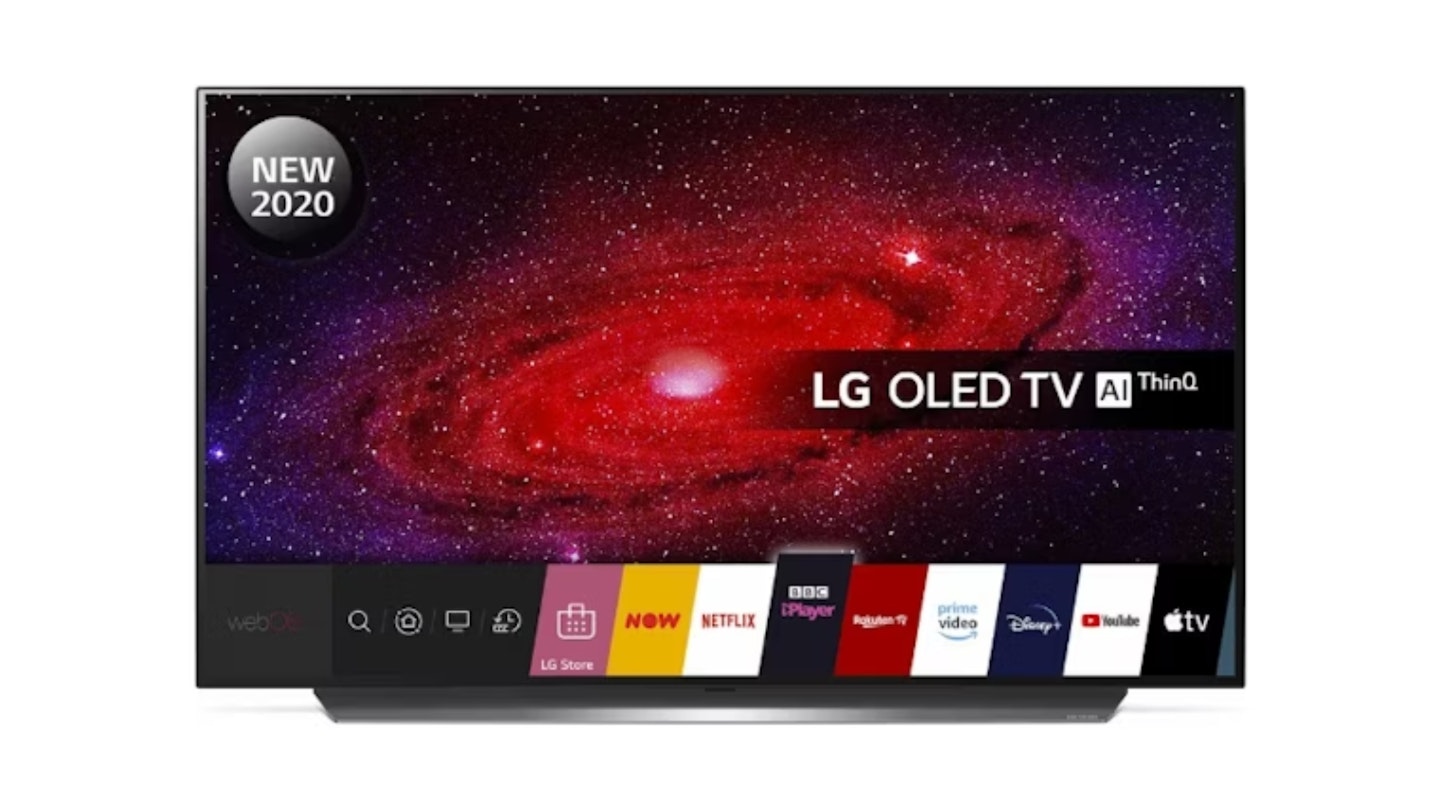

www.currys.co.uk
The LG CX is the big sister of the LG BX and carries very similar genetics. It too has the power to do 4K/120fps with 1ms input lag, and motion-blur-smoothing Game Mode. It’s got G-SYNC and FreeSync.
The OLED screen demonstrates once again why it's the tech to beat, with accurate and vibrant video game colours popping with lifelike realism. The CX’s backlighting is given a boost over the BX, which helps the image appear brighter and adds more authority to the CX’s perfect-black HDR and Dolby Vision IQ. Its brain is wired differently, too. The CX uses the a9 Gen3 Intelligent Processor, as opposed to the BX’s a7. Though both market-leading, the CX’s a9 has 1GB more RAM, handles darkness with great tact and is better at upscaling.
Available in: 48-inch, 55-inch, 65-inch, 77-inch
Pros
- Supreme quality image and colour representation
- Industry-leading game support
Cons
- Expensive
| Image Tech: | a9 Gen3 Intelligent Processor, OLED, Perfect Colour, Dolby Vision IQ, HDR10, HDR10+, HLG, NVIDIA G-SYNC & FreeSync compatible |
| Audio Tech: | AI upscaling, Dolby Atmos, 2.2ch |
| Native Refresh Rate: | 120Hz |
| VRR: | Yes |
| Connections: | HDMI 2.0 x2, HDMI 2.1 x2 (eARC supported), USB x3, Bluetooth, WiFi, ethernet |
Samsung Q90T QLED
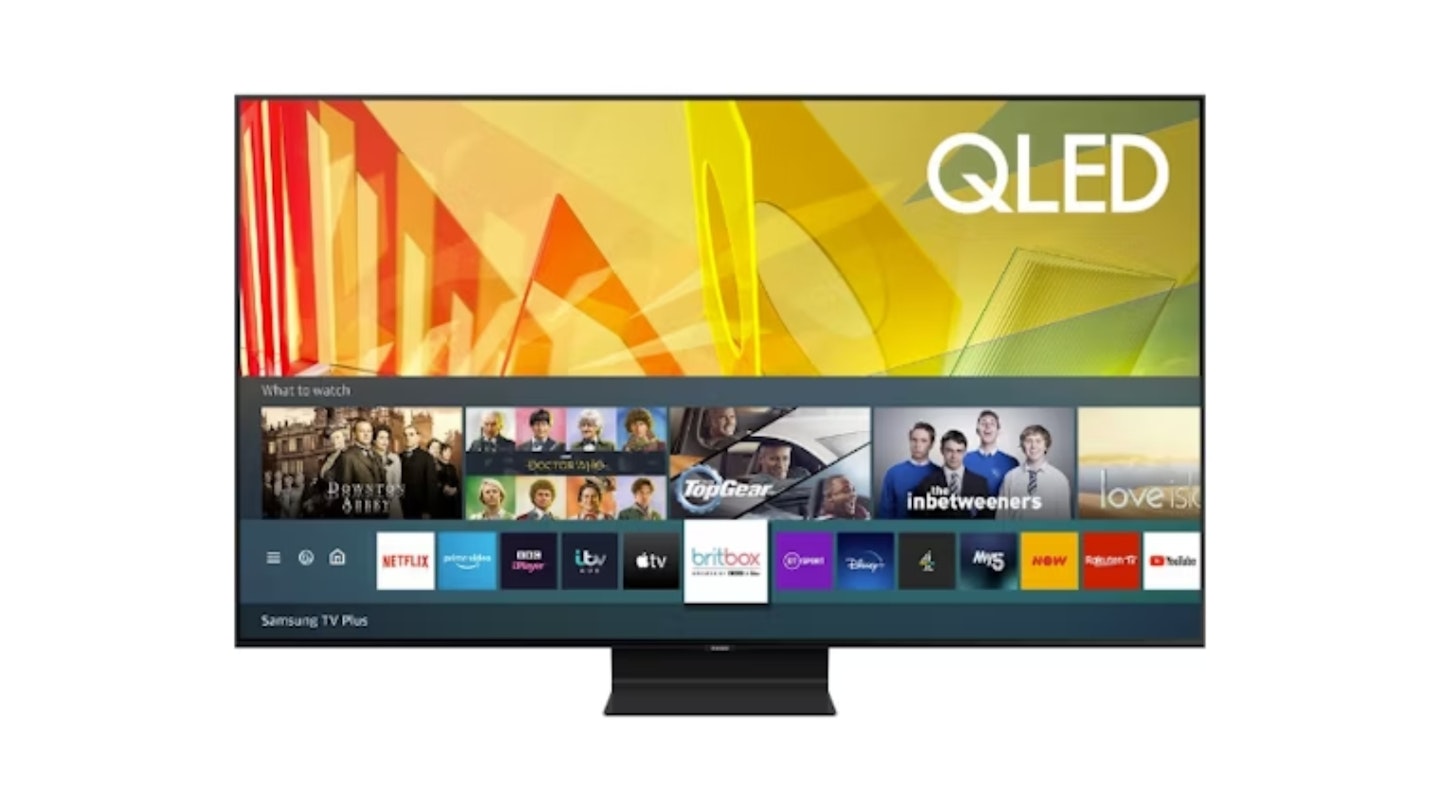
The Samsung Q90T QLED TV carries plenty of gamer-pleasing features. In addition to its 4K/120fps peak performance, super-low input-lag and FreeSync compatibility, the Q90T has a Game Enhancer+ Mode that overhauls that TV’s colour equalisation, revealing greater details in video game worlds.
The TV’s Quantum LED, or QLED, can achieve brighter whites and darker blacks than standard LEDs. The Quantum HDR tech onboard furthers the QLED’s power, deepening vibrancy and allowing the 100% colour volume to flex its strength. It’s not up to the quality of OLED, but it does answer some of that tech’s shortcomings - most notably, brightness. The Q90T has full-array local dimming that provides enough headroom for the TV to push out twice the brightness of its main competitors, the LG BX and CX OLED series.
Behind the screen, there are eight built-in speakers for Samsung’s Object Tracking Sound. This feature has audio follow action around the screen for an improved sense of direction. Dolby Atmos and DTS are also supported.
Available in: 55-inch, 65-inch, 75-inch
Pros
- Bright and vivid images
- Excellent HDR
Cons
- Expensive
- Image still falls behind OLED
| Image Tech: | Quantum 4K Processor, QLED, Direct Full Array, 100% colour volume, Quantum HDR 2000, HDR10, HLG |
| Audio Tech: | Object Tracking Sound, Adaptive Sound+, Dolby Atmos, DTS |
| Native Refresh Rate: | 120Hz |
| VRR: | Yes |
| Connections: | HDMI 2.0a x4 (eARC supported), USB x2, Bluetooth, WiFi, ethernet |
HDMI, Resolution and Refresh Rate: A Quick Reference Guide
Port interfaces have a direct effect on the resolution and refresh rate attainable by a monitor. More recent iterations of the HDMI interface can transfer larger volumes of information, allowing for higher refresh rates and resolutions to be achieved.
Linking your gaming PC, PS5 or Xbox Series X to the correct port and with the right cable will ensure that your monitor performs at the peak of its powers. Here’s a quick guide breaking down the maximum refresh rates and resolutions for HDMI connections:
HDMI 1.4 - 120Hz at 1080p, 75Hz at 1440p, 30Hz at 4K
HDMI 2.0 - 240Hz at 1080p, 144Hz at 1440p, 60Hz at 4K
HDMI 2.0a - The same as 2.0, but with additional support for HDR
HDMI 2.0b - The same 2.0a, but with additional support for HLG
HDMI 2.1 - 120Hz at 4K, 60Hz at 8K UHD
The version of HDMI that a TV carries is not always specified clearly. However, if a TV advertises HDR technology, it’s a safe bet that it has at least the HDMI 2.0a iteration, and likewise for HDMI 2.0b and HLG.
READ MORE: The Best Soundbars Under £200
READ MORE: Upcoming Game Releases
READ MORE: The Best Monitor For PS5
